Written by Carlos Deleon
Aikido is an art of interaction. Perhaps it is not an interaction through words, but rather an interaction through bodily contact. Practitioners of Aikido constantly achieve a form of contact with their partner, whether it is by striking, grappling, pinning, throwing, or even the basic forces of pushing and pulling. Through contact, we are able to feel the presence of our partner, to feel their energy, to receive it, and thus manipulate it accordingly by using our techniques. These two personas, the one who gives energy (uke), and the one who directs it (nage), are both integral to the personal development of an Aikido practitioner. With a steady frequency of practice, we are able to discover new realizations which help us find the purpose of playing these two roles.
Role of uke: Learning to trust your partner
A core fundamental of Aikido is the ukemi, the way in which the person giving the energy responds to its manipulation by the other, usually taking the form of falls and rolls. The main and practical reason for performing ukemi is to neutralize the energy, thus leaving the person safe from physical damage that could have otherwise happened if he/she resisted the other person’s technique. However, the ukemi also serves another role in the mind of the practitioner. By taking ukemi, they fall down, again and again and again, constantly. By taking ukemi, practitioners learn to quell their own pride, as they literally realize they’re not above others if they have fallen to the ground, thanks to their partners. By taking ukemi, practitioners learn to have discipline, to have respect for their partner, to harness their own willpower, and as a result, rise up from the ground to continue their practice.
By removing any notion of pride, the uke learns another important aspect of Aikido: self-sacrifice. The uke sacrifice themselves by giving their energy to the nage to the best of their abilities, regardless of possible fear for their own personal well being. The uke learns to trust nage in their ability to manipulate the energy given to them and their ability to keep uke from bodily harm. As such, a mutual relationship is established between the physical interactions of these two characters.
Role of nage: Adjusting to your partner’s energy
The nature of nage’s response to the energy of the uke is another fundamental of Aikido. The nage applies techniques which draw its strength from the receiving energy, resulting in the uke submitting because of the power they gave. These techniques are based on movements that nage performs in order to synchronize or harmonize with the energy of uke. This causes nage to exert minimal effort in manipulating uke, and causes uke to be safe from serious injury. It is essential for an Aikido practitioner who takes on the role of nage to have concern for the well being of their partner. They have a responsibility to keep the integrity of their partner and to use the energy given to them in a positive manner.
The nage must also have concern for their own being as well. This manifests in absolute concentration towards the interaction between both partners. When the nage possesses aware mind, the nage can respond efficiently and without hesitation to the actions of the uke, resulting in maintained integrity of both persons. Again, through contact, the nage feels the presence of the other. By that first contact, they can get an idea of the partner’s character as uke and how they will move and respond. Through that feeling of contact, both parties learn to understand the other’s movement, thus creating a unique interaction. Each person will have a different feel, and it is nage’s duty to adjust to the movement of every new partner they practice with.
Aikido is more than just self-improvement
By taking on the roles of uke and nage as time progresses, the Aikido practitioner achieves personal development. They learn core values that come from the practice of Aikido, such as self-sacrifice, respect, discipline, trust, cooperation, and love. By performing both of these roles, a person can better oneself, both mentally and physically. When we practice, we constantly strive to improve ourselves, whether it’s through our techniques or through our ability to learn more from the interactions with our partners.
Yet, there is a greater purpose through our self-improvement. If we simply practiced Aikido for the sake of our own benefit, we miss the ideology behind this martial art. We seek to improve ourselves not just for self gratification, but for those around us. Our training drives us to strengthen our relationships and possibly even create new ones. We practice with multiple partners for this reason. In essence, we become a family, and even our family of practitioners is a small part of another family, which is the global community. As we immerse ourselves further into studying Aikido, we realize that we are part of something greater than ourselves. Through Aikido, we improve our mind in body so that we may be of better service to society. In practice at the dojo, we have two roles to perform. In application to our daily lives, we ultimately have one purpose: to better ourselves for the sake of others.
Carlos Deleon is a high school student from Bishop Allen Academy. He has practiced Aikido since late Autumn of 2010. Carlos is also a musician, currently at the Grade 9 Royal Conservatory of Music level for piano, and also plays the trombone in his high school band. His other interests include military history, anime and manga, computer, and food.

